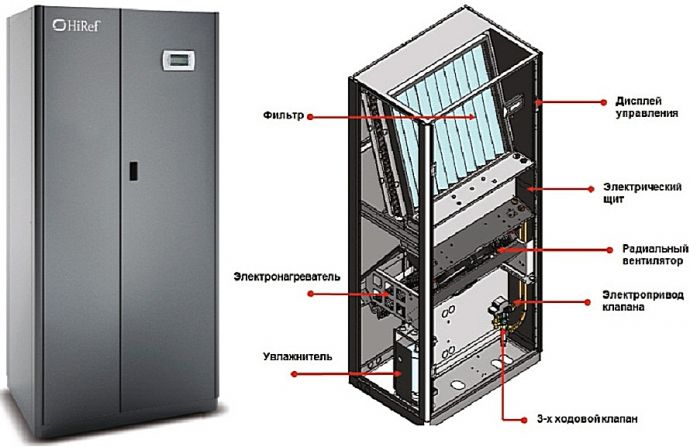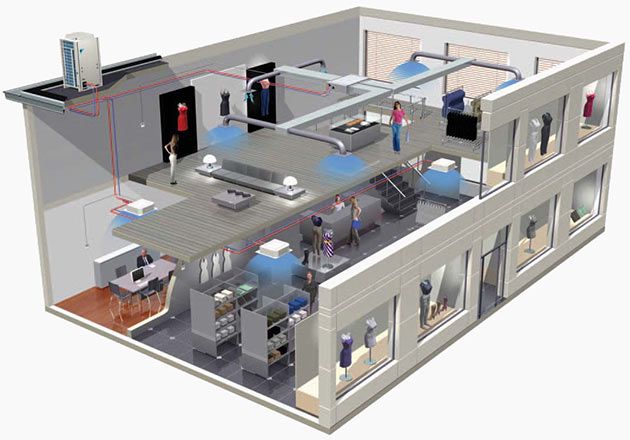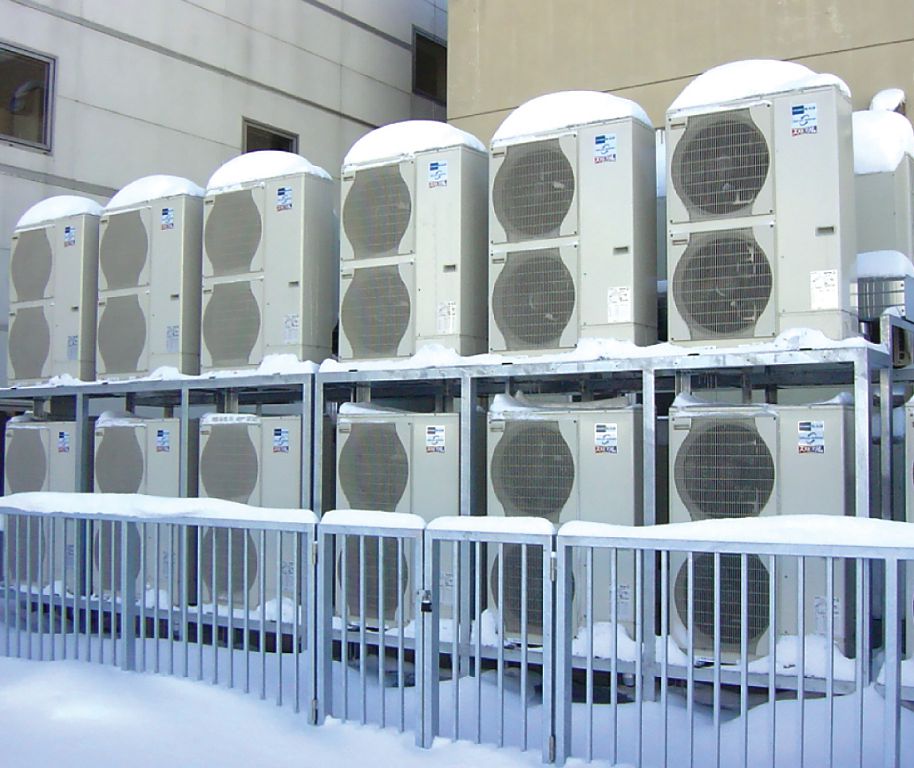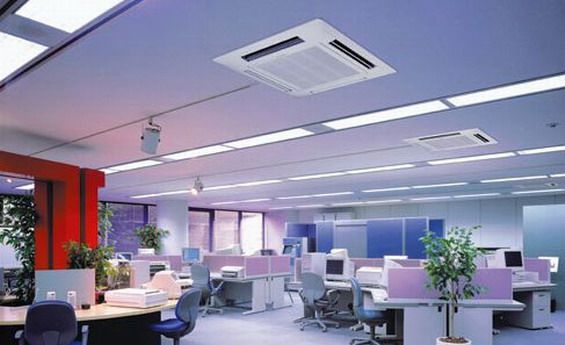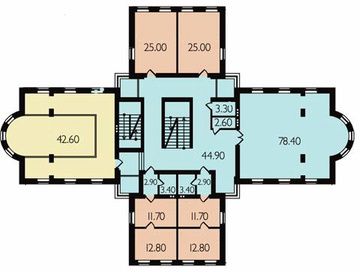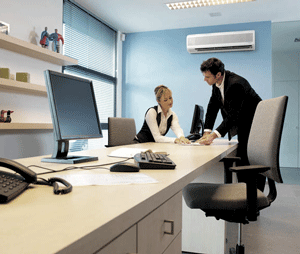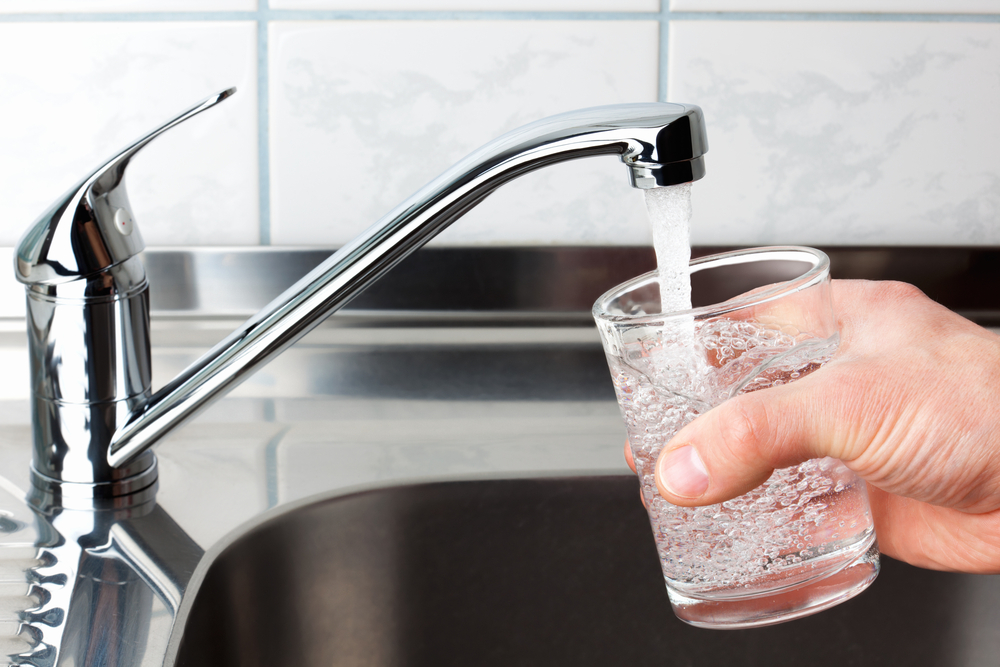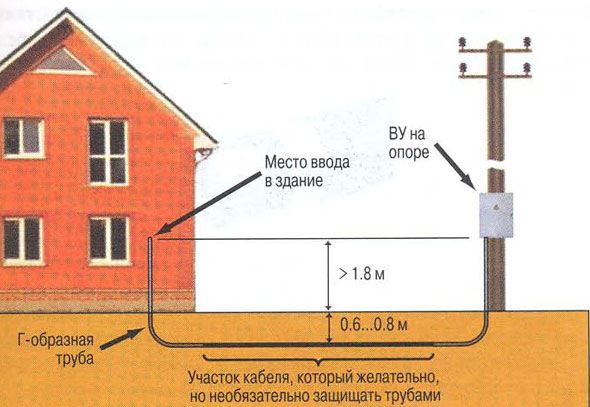The cellar is designed for storing raw and canned vegetables and fruits. Wine cellars constitute a separate category. In any case, the room requires a certain climate, which allows you to preserve the desired properties of the products for a long time.
Do I need an air conditioner for the cellar

The temperature in the vegetable cellar should be in the range from +1 to +12 degrees. If the room gets warmer, aerobic bacteria are activated and cause food to rot. At sub-zero temperatures, the water that is part of fruits and vegetables freezes, as a result, the taste is lost.
To prevent the food from drying out, the air humidity must be at least 85%.
When it comes to canned products, the requirements for temperature and humidity are not so strict. However, in dry air they will last longer.
As a rule, if the cellar is located below the level of freezing of the ground, the temperature is + 6… + 12 degrees almost all year round. However, in especially hot weather, the room begins to warm up. In this case, basement air conditioners are needed.
Microclimate parameters for wine cellars
To obtain quality wine, the fermentation of raw materials must take place under certain conditions. Violation of climatic norms will spoil the best grapes. Maintaining a constant microclimate is possible only with the help of wine conditioners.
The norms for maturation and storage of wine are:
- 75% humidity;
- air temperature from 10 to 14 degrees (set for different varieties);
- complete darkness;
- high-quality ventilation;
- no shaking.
The indicators must be maintained constantly, without drops and jumps. Otherwise, the winemaker will not achieve the desired taste and aroma.
Household monoblocks and split-systems are not able to cool the room below +16 degrees, so you should give preference to special equipment. For this, specialized conditioners in the wine cellar are ideal.
Features of the device of climatic technology for wine rooms
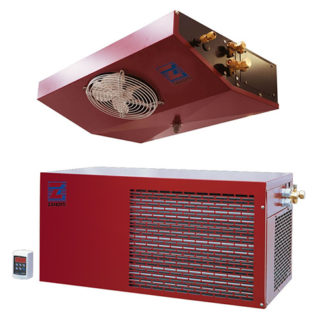
Inverter-type equipment allows maintaining the required temperature and humidity in a wide range with minimal fluctuations in values, which is not dangerous for the technological process.
The wine room air conditioner is a split system. The outdoor unit can be taken out, the indoor unit can be built into the wall or hung on the ceiling. The compressor located in the outdoor unit is a source of vibration and noise, so it should be installed away from the wine room. There are length restrictions for the freon line, they are taken into account when choosing a place for the outdoor and indoor units. Manufacturers also offer noise-reduced wine room conditioners, but they are more expensive.
In order for the outdoor unit to operate at temperatures below zero, the package includes a heat belt that warms up the compressor. A number of improved models have a heating function, which is necessary in the cold season: freezing wine destroys its taste and aroma.
Some variants of climate control technology for basements are built into the entrance door, ensuring its thermal insulation and optimal temperature inside the room.
Advantages of air conditioners for the cellar:
- maintaining the optimal temperature, depending on the type of wine, from +2 to +18 degrees;
- maintaining indoor humidity from 70% to 85%;
- the possibility of an inflow of fresh air from the street;
- accuracy of the temperature value of 0.5 degrees;
- a wide range of design options: monoblocks, split-systems of wall, ceiling, duct, cassette types.
There is only one disadvantage of the equipment - the high price.
The most famous wine conditioners come from French manufacturers. These are the Fondis and Friax brands. The technique is specially created for wine rooms and cellars.
Manufacturers offer a fairly wide range of models. You can choose the right one in terms of power and design. If the evaporator cannot be installed in the cellar, ducted air conditioners are installed in the wine cellars. All equipment is located outside, connected to the cellar with a duct system.
The only difficulty lurking in the installation of an air conditioner for a wine room is the water supply. The evaporator must be supplied with water to maintain a high humidity level.
The installation specialists will tell you where to place the air conditioner. The more difficult the tasks assigned to the masters, the more expensive their implementation.
Refrigeration unit
A refrigeration unit is an alternative to an air-conditioned cellar. It can accommodate as many products as a medium-sized cellar can hold. Reliability and durability of such equipment surpasses air conditioners.
The refrigeration unit can be delivered anywhere. As a rule, basements or basements are chosen for these purposes.
First, the floor overlap of the first floor should be insulated and ventilation should be provided so that stagnant air does not adversely affect the products.
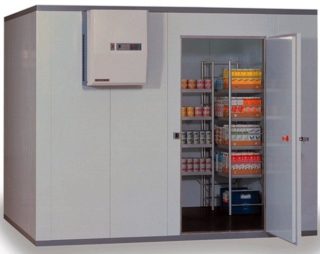
Refrigeration equipment advantages:
- Ease of use. Maintaining a constant air temperature keeps food fresh for a long period.
- Temperature regulation. The user can independently adjust the required cold level in the range of -5 .... + 10 degrees.
- Economical service. After the purchase and installation, financial costs will be required only for the electricity consumed.
Refrigeration unit with medium temperature range 0 ... + 10 is intended for storage:
- vegetables, herbs, fruits;
- fresh meat and fish;
- sausage products;
- cheeses and dairy products;
- preserves and pickles;
- wines.
Equipment with a minimum temperature regime is used for medium and deep freezing of berries, vegetables, mushrooms, meat, fish, etc. The air temperature in them can reach -20 degrees.
The refrigerator compartment can be used to store fur products that require temperatures no higher than +5 degrees.
Refrigeration unit
The technique is made from polyurethane foam panels using thermal insulation: expanded polystyrene, mineral wool, etc.
The operation of the cooling equipment is provided by a refrigeration machine, which can be made in the form of a monoblock, split system or a prefabricated unit.
The prefabricated plant is produced according to an individual project, so it is characterized by maximum efficiency in operation. Noise level, degree of reliability and protection, dimensions are determined by the needs and budget of the customer.
A ready-made split system or monoblock is selected depending on the size of the room.
Operating rules
Products should be packed in airtight containers so that odors do not mix or absorb. The packages must not touch the lid and walls of the chamber.
It is necessary to monitor the operation of the equipment, since sometimes the electricity is cut off, and the installation must be restarted.

